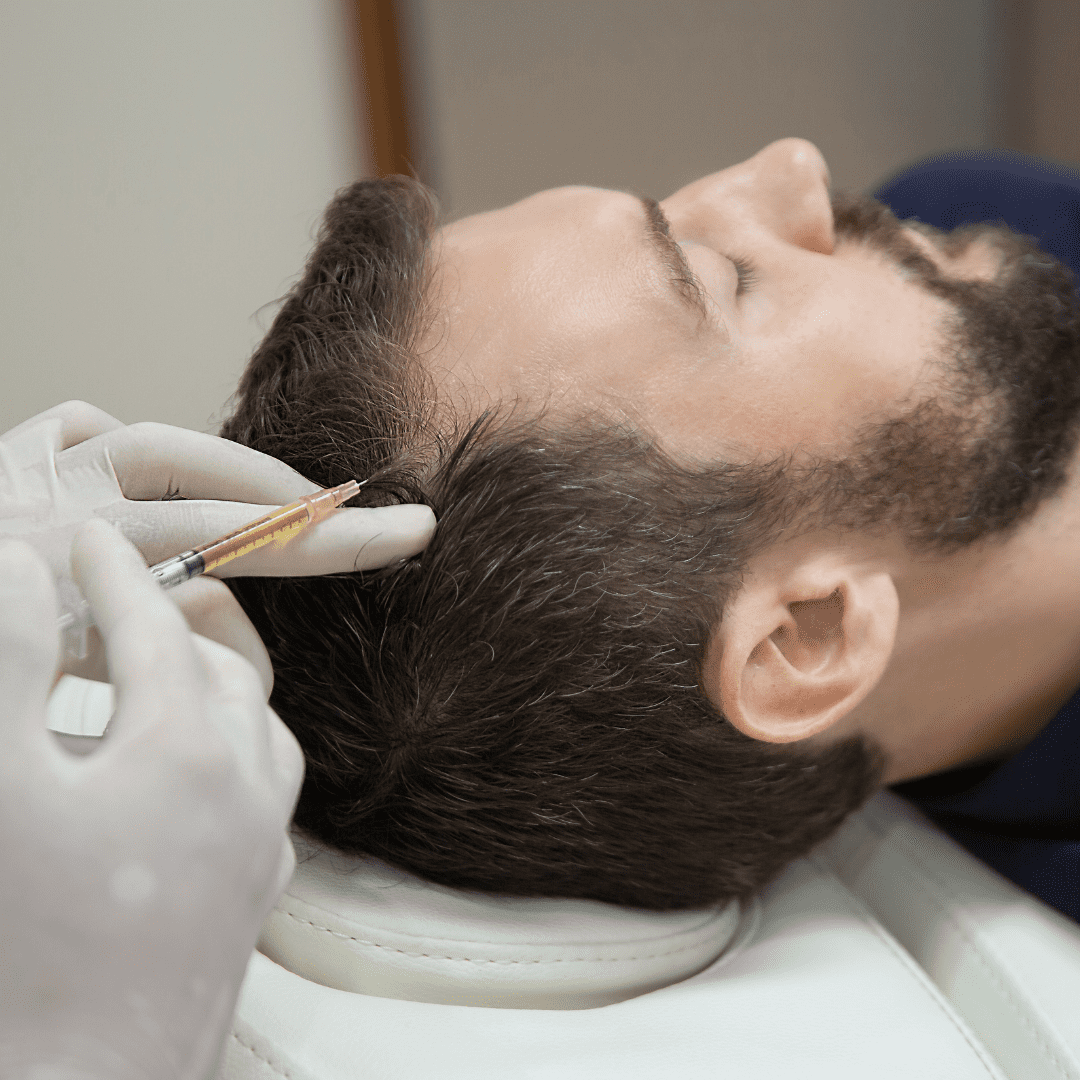Are you constantly worried about hair loss? Do you keep going crazy picturing yourself in 5 years? Well, then you belong to us. And we're confident that you'll adore The Science of Beauty, an Allure.com series that delves deep into the what, how, and why of your preferred products. Check out our editors' podcast, The Science of Beauty, for even more nerdiness.
You've surely heard of the "vampire facial," a skin treatment that essentially uses your own blood to promote a radiant, youthful complexion, at this point. You may not be aware that there is a similar treatment for hair loss, which does, in fact, also call for your blood.
According to Joshua Zeichner, the director of cosmetic and clinical research in dermatology at Mount Sinai Hospital in New York City, it is known as platelet-rich plasma or PRP. This is how it goes: Red blood cells and plasma are the two major building blocks of our blood, he explains. White blood cells and platelets, which are abundant in growth factors, are found in plasma.
Growth factors essentially operate as messengers, signaling the activity of skin cells. In reality, they have been employed in medicine to treat a variety of ailments, including arthritis and aging symptoms. According to Zeichner, growth factors can "help stimulate the activity of the hair follicles and promote new hair growth," which is excellent news for anyone who has thinning hair.
The administration of PRP is "a beneficial option for hair loss because it has a number of scientifically supported articles showing its efficacy increasing hair count, hair thickness, and the growth phase of the hair cycle," claims Neil Sadick, a board-certified dermatologist in New York City and the director of the Sadick Research Group for comprehending and treating hair loss.
Board-certified dermatologist Tina Alster of Washington, D.C., mixes PRP with other clinically tested treatments for hair loss in her practice, including oral supplements (like Best of Beauty winner Nutrafol) and topicals like Rogaine.
What is The Process Like?
As with most procedures, there is a careful process involved in using PRP therapy for hair regrowth, starting with a typical blood sample taken from the patient's arm. The blood tube is then placed in a centrifuge, according to Zeichner, "which spins the blood tube to separate out the red blood cells from the plasma." The platelet-rich plasma is then directly injected into the scalp, close to the hair follicles.
Although the treatment is meticulous, it usually only takes a few minutes to complete. Injections are placed around every half inch across the area of losing hair.
Risks Involved
It might sound scary (blood draws and needles?!), but for the most part, there's no real risk associated with PRP. "Most patients get injections without any numbing, as there is minimal discomfort," says Zeichner. "However, cool air or ice packs may be used to minimize pain." In the event there is any discomfort, Tylenol after the procedure is also recommended. Bruising can occur but usually resolves within a week or two.
Minimal downtime, if any, is needed, while Zeichner adds, "I personally recommend a warm shower, as the hot temperature will enhance blood flow and circulation throughout the scalp," he says. This means going a day (or two) without your typical hair maintenance (coloring, processing, blow-drying, etc).
Who Does It Work For?
Anyone experiencing trouble with hair growth is essentially a good candidate for PRP treatment for hair loss, however, early hair loss sufferers typically react the best, according to Sadick. "PRP is best used for patients with androgenic alopecia, which is a genetically determined type of hair thinning that typically occurs along the top of the head," continues Zeichner. This may resemble a widening part in a woman with thick, typical hair at the rear of the head.
Are the results as expected?
For best results, consistency is key. Treatments are typically performed once a month for the first three to four months, and then every three to six months thereafter, depending on the individual patient's response and results. Following this protocol, anticipated results can first be seen within two to three months, says Sadick.
According to Sadick, the first effect that patients typically observe is a reduction in hair shedding, which is followed by an early regeneration and an increase in hair length. According to the general view, it is best to continue stimulating the growth factors and stem cells linked to hair regrowth and halting hair loss over the long term by undergoing treatments every three to six months.
As we said, it's important to keep in mind that PRP can, and should, be a part of a multifaceted program to treat hair thinning and loss. Your dermatologist may prescribe you spironolactone or finasteride to help promote hair regrowth as well if you are postmenopausal, says Zeichner.
Here, at The Wellness Co., a series of natural growth factor injections into the scalp are used in hair growth rejuvenation therapy to restore health to compromised hair follicles. This rejuvenation technique can strengthen and thicken your hair while also encouraging the renewal of thinning hair.
To Learn More,
Book Your Appointment Now!

